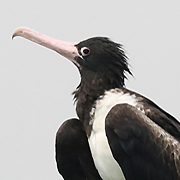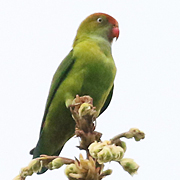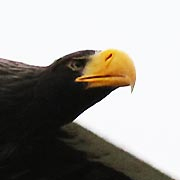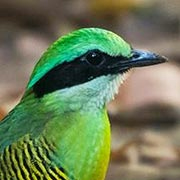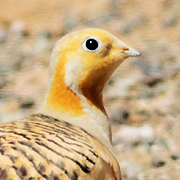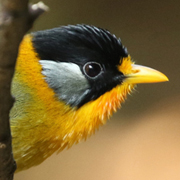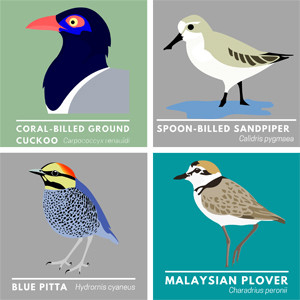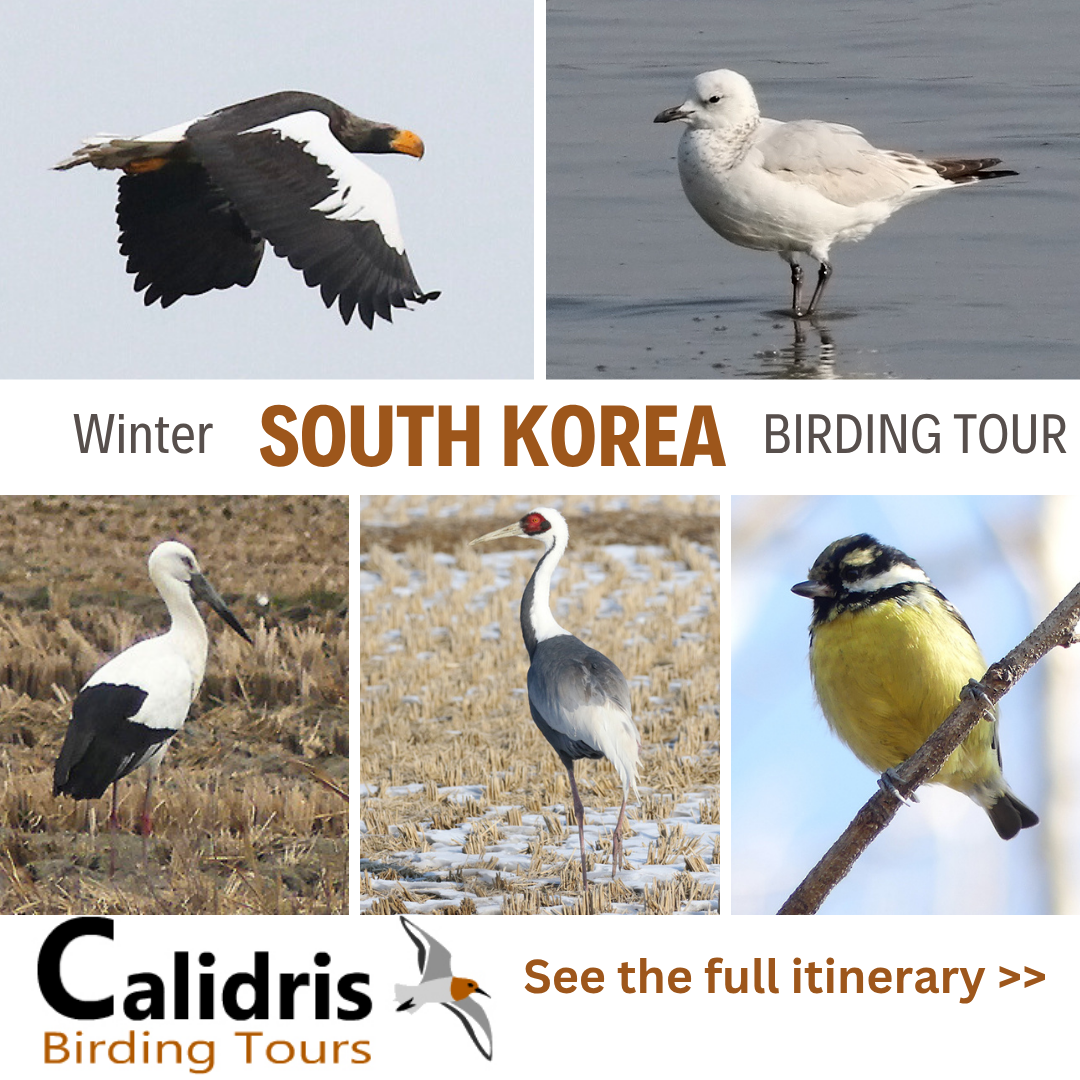On 8th July Andrew Ley and I took a trip to Bang Pra to look for the specialities of that site and just to take in a wide variety of birds.
Leaving Bangkok at 5am saw us arrive at Bang Pra at a little after 6am, at which time birds were very active. It didn’t take us long to find a Greater Racket-tailed Drongo making a noise and a couple of Lineated Barbets performed very nicely by perching on a dead tree. In the early morning it is easy to find birds around the small lake and regular species such as Racket-tailed Treepie, Yellow Bittern, Common Iora, Yellow-vented Bulbul, Little Cormorant are always much in evidence and they didn’t disappoint this time either.
Woodland Birds
Bang Pra has a decent expanse of fringing woodland and although birding was a little slow we found a good selection of species for this habitat throughout the morning. We had good views of Laced Woodpecker twice, lots of Rufous Treepies, a number of Greater Racket-tailed Drongos, a Green-billed Malkoha, 2 Black-throated Laughingthrushes, a group of White-crested Laughingthrushes, an Asian Barred Olwet, Brown-throated Sunbird and Olive-backed Sunbird.
One thing I always like about a visit to Bang Pra is that a good number of large and showy species are often seen, as the above list proves. This is not confined to the woodland however.
Waterbirds
In the winter months a number of shorebirds can be found at this site. In July, though, only resident species are available to birders. We found Yellow Bittern, Cattle Egret, Great Egret, Little Egret, Javan Pond Heron, White-throated Kingfisher, Little Cormorant, Black-winged Stilt, Red-wattled lapwing and Oriental Pratincole. In addition to these we found 3 Painted Storks and had 7 Spot-billed Pelicans fly in and land on the water before taking off again.
The storks and pelicans at Bang Pra originate from Khao Khieo open zoo, about 10 km away, but both species have set up breeding colonies outside of the zoo and have existed as wild birds for many years. Many birders in Thailand don’t count these birds but it depends on the criteria one uses for “ticking” a bird. In my opinion these 2 native species, which were both virtually extirminated from Thailand, have lived independently of the zoo for long enough to be included on my lists: if they had been purposely released at Bang Pra we would call it a successful reintroduction so I think their presence should be celebrated. Whether one includes them as wild birds or not, the sight of them is impressive none the less.
Grassland Birds
The grassland habitats at Bang Pra are very productive for birdwatchers. Andrew and I found both Indochinese and Australasian Bushlarks, Paddyfield Pipit, Zitting Cistiocola, Bright-headed Cisticola, Green Bee-eater, Chestnut-capped Babbler, Yellow-bellied Prinia, Plain Prinia, Long-tailed Shrike, Hoopoe, Scaly-breasted Munia and Ashy Woodswallow in these habitats.
This used to be an excellent place to easily see quail but one has to look harder now, although they are still present. We spent a lot of time trying to track down calling male Chinese Francolins (which are common here and make a rather maniacal call), but eventually got good flight views of a female. We also flushed a Barred Buttonquail which we didn’t see well but I could identify from its dark colouration and bright buffy undertail coverts.
By 11am we were both very tired having done a lot of walking and extremely hot: Bang Pra is always a very humid and hot location. We were lucky in that the sun stayed behind the clouds, so were spared the direct sunlight, but humidity was, as always, close to unbearable.
Having seen an excellent selection of birds we returned to Bangkok, making the trip in little over an hour.
birds, birding, thailand, nature, national parks


 July 16th, 2008
July 16th, 2008  Nick
Nick  Posted in
Posted in 
